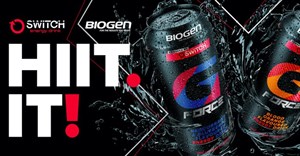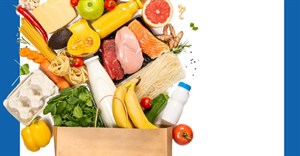
Subscribe & Follow
Energy drinks buck beverage category trend to record sales growth in 2020
However, one category to buck this trend was ready to drink (RTD) energy drinks which was the only non-alcoholic beverage category to record both volume and value growth in 2020, reveals Khathu Musingadi, research analyst at BMi Research. “The RTD energy drinks category grew by 5.7% last year.”
What contributed to this growth, she says, was the continued narrowing price difference between RTD energy drinks and soft drinks.
“Where there is little price differential, RTD energy drinks are viewed as offering a value add when compared to other beverages. In certain instances, value-based energy drink alternatives are priced the same as sparkling soft drinks which has prompted consumers to instead opt for energy drinks,” she says, adding that the continued good performance of value energy drink alternatives positively impacted the growth of the category.
The introduction of value-added products to this category six or seven years ago is the main driver of growth, explains Shawn Henning, a consultant to BMi Research. “In 2020 consumers were looking to get their money’s worth. Given that energy drinks are perceived to offer added value, when they are priced the same as soft drinks, consumers will naturally select them.”
South Africa is not the only country where the introduction of value adds has resulted in category growth. “The dynamism in this particular category is fuelling growth,” says Henning. “As with any product life cycle, initially there are premium priced products at the beginning of the life cycle. The initial good growth then slows down. However, the category gets re-ignited with value added products and volume growth then picks up but is typically accompanied by deflation in the category with price decreases. This trend too is evident in other African countries.”
Visible promotional activity during the year helped to keep RTD energy drink consumers loyal to the product while they were largely at home during Covid-19 enforced lockdowns.
Demand across most pack types and sizes grew. Interestingly, metal cans still dominate packaging sales.
While all other channels recorded positive volume growth, on-premise volume for RTD energy drinks declined in 2020 as a result of Covid-19 enforced closures and restrictions placed on on-premise outlets. Garage forecourts, on the other hand, were the big winners given their convenience and perceived safety due to a lack of queues. This is despite the fact that garage forecourt convenience stores charge a premium.
“We expect that the RTD energy drinks category will grow by 15.1% in 2021 and then by an annual average rate of 12.8% from 2022 to 2025 as the economy starts to recover from the pandemic and consumers become more active and mobile,” says Musingadi. “There is no question that this growth is being assisted by the prominence of value brands which have kept their prices relatively consistent over the past decade.”
For further information please contact Khathu Musingadi: az.oc.imb@uhtahk or +27 11 615 7000.
- Refreshing 2023 performance by ready-to-drink beverage sector27 Jun 13:49
- Energy drinks category continues its double-digit growth trajectory25 Jun 09:56
- Loadshedding catapults takeaway sales (delivering advertising opportunities for marketers)03 Apr 10:05
- Mystery shopping results now delivered in 24 to 48 hours by BMi Research15 Feb 13:27
- BMi Research assesses the impact of load shedding on meals27 Sep 11:40














